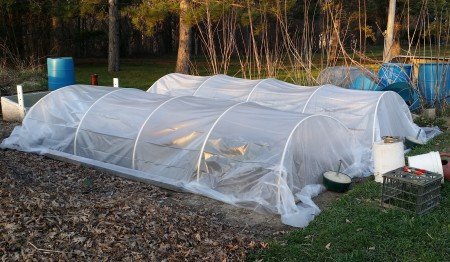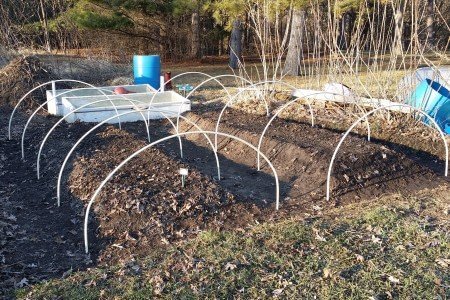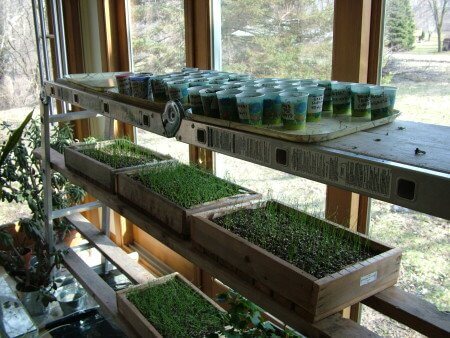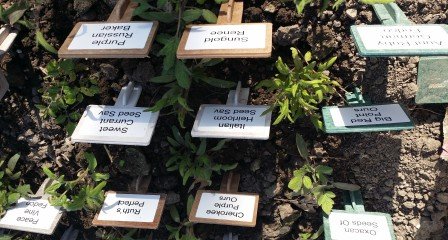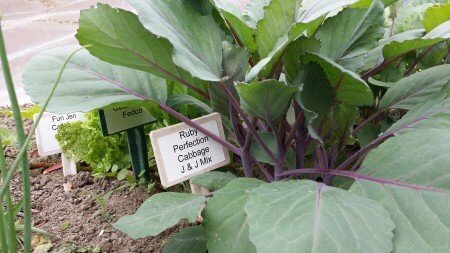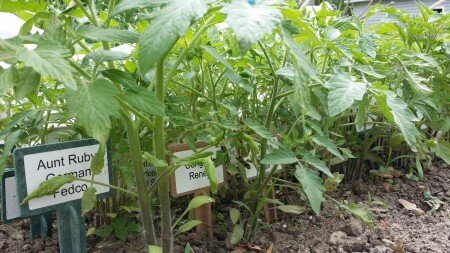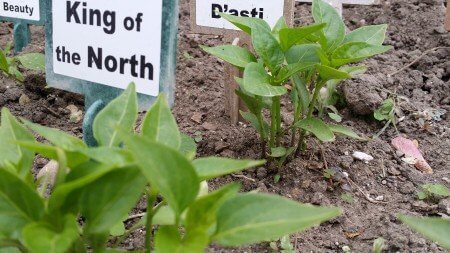Inexpensive and easy to erect low hoop tunnels can save the home gardener a lot of work in getting seed starts into the garden. For the past several years I’ve nearly eliminated the tedious chores of carting flats of vegetables outdoors and back inside daily to harden them off. Additionally, I don’t have to pot off seedlings to larger containers. Instead, I merely transfer sprouted seedlings directly to the soil in the bed under the hoop tunnel.
There are numerous instructions online and elsewhere for setting up low tunnels. The tunnels I use are made of PVC tubing, concrete reinforcing rod (rebar) and polyethylene. Here’s how I first set mine up.
I start my early seeds such as tomatoes, peppers, eggplants and celery using a heat mat. The onions, started even earlier, have already been sprouted on heat mats. The paper cups are holding the veggie seeds which I’ll put in flats and move to the heat mat to sprout.
I put these cups of sprouted seedlings directly in the ground in the hoop tunnel bed. I just peeled off the paper, made a hole, and planted the sprouted seedlings. In previous years I was separating and spacing out the seedlings, but now I just place the whole cup (minus the paper) in one hole. The seedlings still have plenty of room to spread out and while they might get a little bigger if they were separated, in the long run, I don’t think it makes much difference.
I put the brassicas in first, about April 18th.
Here are the tomatoes and peppers set in on April 23rd. All are vigorous with good stems and roots and totally hardened off.
Using hoop tunnels for seedling transplants requires daily monitoring. Nighttime temperatures should not be in a hard freeze. The hoop tunnel is not heated and thus consistent hard freezes could kill the plants. To protect the tender plants I used a double cover to provide good insulation. Just over the baby plants, I set a cover of agricultural fabric supported by plant markers to keep from flattening out the plants. The fabric and the poly cover of the tunnel over the frame has insulated my crops safely with night temps falling into the mid-20’s.
Even more dangerous than the possibility of freezing is letting the daytime sun cook the plants. I shaded the new seedlings for a few days to prevent the tender leaves from becoming sunburned. If not vented, temperatures in a hoop tunnel can easily reach 140 degrees F. So the ends of the tunnel need to be opened or the entire cover lifted off to prevent burning the plants. Thus using these tunnels are not an option for a gardener who can’t be there on a daily basis to keep control of the heating and cooling. However, if your schedule permits, they can make seed starting a lot easier.

